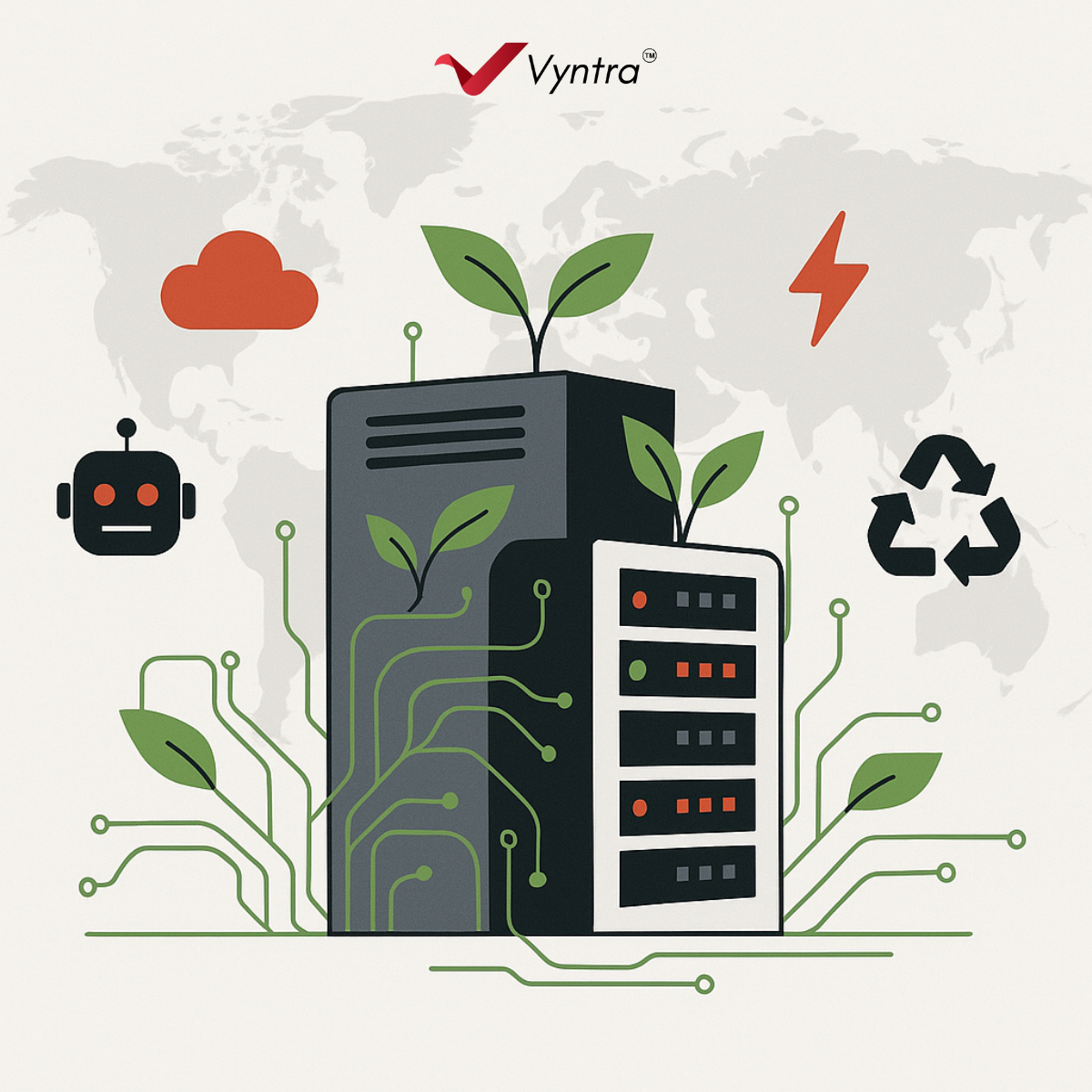
Sustainability in Tech: Why Green IT Is Becoming a C-Suite Imperative
A decade ago, sustainability in technology was often seen as a “nice-to-have”, a checkbox under corporate social responsibility. Fast forward to 2025, and the conversation has shifted dramatically.
A decade ago, sustainability in technology was often seen as a “nice-to-have”, a checkbox under corporate social responsibility. Fast forward to 2025, and the conversation has shifted dramatically. Today, sustainability has become a C-suite imperative, shaping boardroom agendas and influencing how enterprises build, manage, and grow their technology ecosystems.
Why the shift? Because sustainability in tech is no longer about image. It’s about efficiency, compliance, resilience, and long-term profitability. And forward-looking CXOs know that “green IT” is fast becoming the baseline for future competitiveness.
Beyond CSR: Why Green IT Matters Today?
The global digital economy is energy hungry. Data centres already account for nearly 3% of the world’s electricity use and are projected to consume 8% by 2030 if left unchecked (IEA, 2024). With enterprises moving aggressively toward AI, automation, and cloud adoption, this footprint will only expand.
But here’s the twist: going green doesn’t just help the planet, it makes business sense. Sustainable IT practices lower costs, reduce regulatory risks, improve brand reputation, and even enhance talent attraction (as younger generations increasingly prefer working for environmentally responsible companies).
Simply put, Green IT is no longer optional. It’s a competitive advantage.
What Does “Green IT” Actually Mean?
Green IT isn’t just about switching to renewable energy, although, that’s a big part of it. It covers the end-to-end technology lifecycle:
- Green Data Centers – energy-efficient cooling, renewable-powered infrastructure, optimized server utilization.
- Cloud Sustainability – providers investing in carbon-neutral operations and offering sustainability dashboards for enterprises.
- Device Lifecycle Management – reducing e-waste by refurbishing, recycling, and extending device lifespans.
- Software Efficiency – designing apps and AI models with energy-conscious coding to reduce compute intensity.
- Responsible Supply Chains – ensuring vendors and partners adhere to ESG standards in hardware and IT services.
In other words, sustainability isn’t just a facilities issue, it’s an enterprise-wide responsibility that touches strategy, operations, and technology.
The OEMs Leading the Way
The world’s leading tech giants aren’t waiting, they’re racing to make sustainability a core differentiator:
- Microsoft has pledged to be carbon negative by 2030 and is already powering Azure data centres with renewable energy while introducing sustainability scorecards for enterprises.
- Google Cloud operates some of the world’s most energy-efficient data centres and aims to run entirely on carbon-free energy by 2030.
- AWS (Amazon Web Services), the world’s largest cloud provider, has committed to powering its operations with 100% renewable energy by 2025.
- Dell & HPE are reimagining hardware with circular economy principles, offering take-back programs and energy-optimized servers.
- IBM is investing heavily in “green software” initiatives and AI-driven carbon tracking.
For enterprises, these OEM commitments aren’t just PR stunts, they provide a blueprint to align IT strategy with sustainability goals.
The C-Suite Lens: Why Executives Care
So why has sustainability climbed from a CSR report to the CEO’s dashboard? The reasons are clear:
1. Regulatory Pressure
Governments and regulators worldwide are tightening ESG reporting requirements. From the EU’s Corporate Sustainability Reporting Directive (CSRD) to India’s BRSR mandates, non-compliance isn’t just a reputational risk, it’s a financial liability.
2. Investor Expectations
Sustainability is now a top investment criterion. ESG-focused funds crossed $2.5 trillion globally in 2024 (Morningstar), and investors are scrutinizing how enterprises align technology with environmental goals.
3. Cost & Efficiency Gains
Energy-efficient infrastructure doesn’t just cut emissions, it cuts bills. Optimized workloads, server consolidation, and renewable-powered data centres reduce operating costs significantly.
4. Talent & Brand Value
Millennials and Gen Z workers increasingly want to align with purpose-driven organizations. A Deloitte 2024 survey revealed that over 60% of young professionals prefer employers with strong sustainability credentials.
5. Resilience in an Uncertain World
Supply chain disruptions, energy volatility, and climate-linked risks are making sustainability a resilience strategy. Enterprises that build greener IT are inherently better prepared for shocks.
From Strategy to Action: What Enterprises Can Do
Sustainability can feel overwhelming, but CXOs who succeed treat it as a stepwise transformation journey. Here’s what leading enterprises are doing:
- Start with Measurement – You can’t improve what you can’t measure. Use cloud providers’ sustainability dashboards and carbon calculators.
- Optimize the Now – Consolidate workloads, retire legacy systems, and implement energy-efficient cooling in data centres.
- Green the Cloud – Choose cloud partners with aggressive sustainability goals. Hybrid and multi-cloud strategies can balance performance with responsibility.
- Rethink Procurement – Demand ESG commitments from IT vendors and partners.
- Educate and Engage – Sustainability isn’t only a tech decision, it requires cultural buy-in across the enterprise.
The Cultural Shift: From IT Initiative to Enterprise Mindset
The biggest change in 2025 is not just technological, it’s cultural. Sustainability is no longer the CIO’s side project, it’s a C-suite priority. Enterprises are rethinking IT through the lens of responsibility, asking:
- How much energy does this process consume?
- How long is this device’s lifecycle?
- What’s the carbon cost of training this AI model?
When these questions enter boardroom discussions, Green IT shifts from aspiration to action.
Looking Ahead: The Future Is Green
By 2030, it’s likely that sustainability metrics will sit alongside revenue and profit on the CEO’s dashboard. Enterprises that embed green IT today won’t just be compliant, they’ll be leaders in innovation, efficiency, and brand trust.
And for organizations exploring new operating models, whether setting up GCCs, or expanding digital transformation initiatives, sustainability will increasingly be a design principle, not an afterthought.
The future belongs to enterprises that balance technology, profitability, and responsibility. Green IT is where that balance begins.